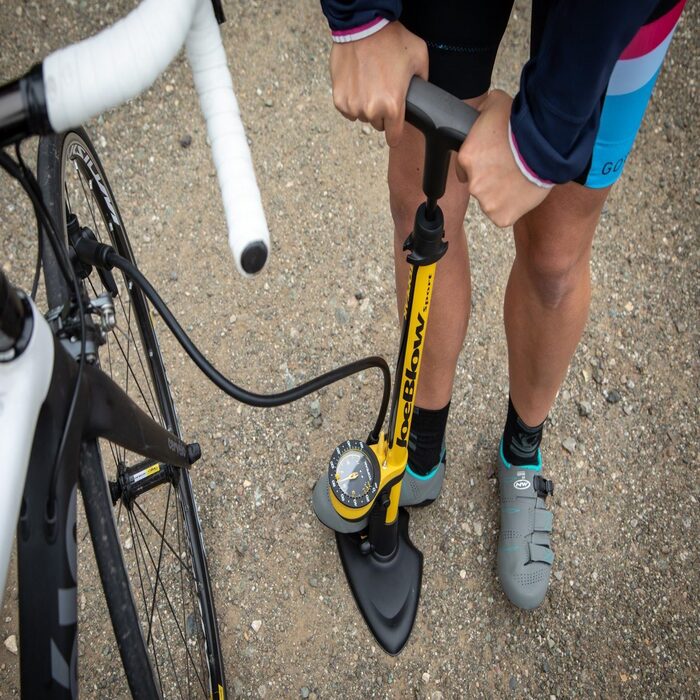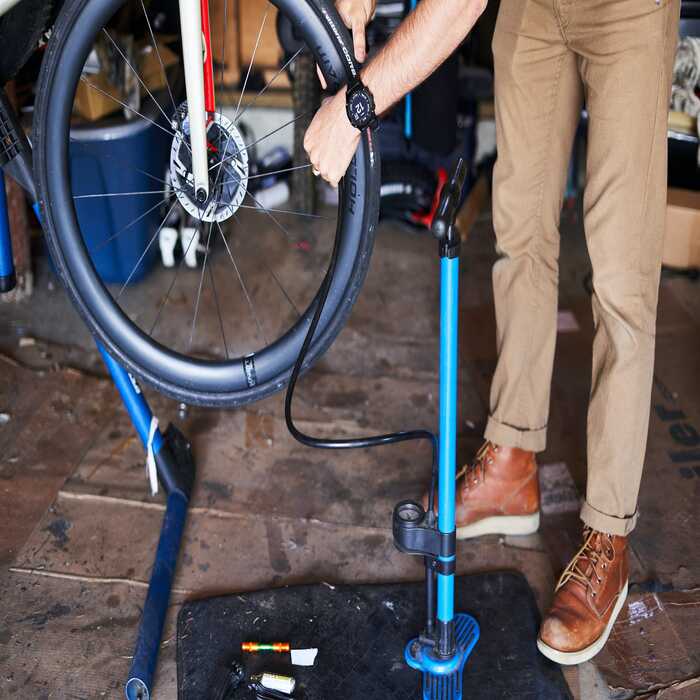Bicycle tire pressure is crucial for optimal performance and safety. Maintaining the right pressure can improve your ride experience, enhance efficiency, and prevent accidents. While ideal pressure varies based on several factors, a bicycle tyre pressure calculator can simplify this task. In this article, we will explore the importance of tire pressure, the factors influencing it, and how to determine the right specifications for your bicycle. By the end, you will have a clearer understanding of maintaining proper tire pressure.
Importance of Correct Tire Pressure
Enhancing Ride Comfort and Efficiency
Correct tire pressure significantly increases ride comfort. When tires are inflated to the right level, they absorb shocks better. This results in a smoother ride, especially on bumpy surfaces. Conversely, under-inflated tires lead to a squishy feeling, absorbing energy without transferring it efficiently. This energy loss can make pedaling feel more laborious, which is not ideal for long rides. Therefore, maintaining proper pressure maximizes your comfort and enhances riding efficiency.
Furthermore, handling becomes more predictable with correct pressure. Over-inflated tires can result in a harsh ride and reduced grip. Similarly, under-inflated tires may squirm, making control difficult. Consequently, proper pressure improves maneuverability, making it easier to navigate turns and obstacles. Thus, having the correct pressure enhances both comfort and control on your bicycle.
Safety Considerations
One cannot overlook safety when discussing tire pressure. Improperly inflated tires pose a significant risk. Under-inflation leads to tire blowouts, which can result in serious accidents. On the other hand, over-inflation can cause tires to burst, also leading to crashes. Thus, ensuring your tires are at the correct pressure is critical for your safety.
Additionally, tire pressure affects stopping distances. Under-inflated tires may not grip the road effectively, increasing the time it takes to come to a stop. This delay can be dangerous, especially in emergency situations. To enhance your safety, check and adjust your tire pressure regularly. Simple preventive maintenance can save lives.

Factors Influencing Tire Pressure
Temperature Changes
Temperature plays a significant role in tire pressure. When tires heat up during a ride, the air inside expands. This expansion can result in increased pressure. Conversely, cold weather can cause the air to contract, leading to lower pressure. Therefore, it is essential to check pressure regularly, considering the temperature variations in your area.
Moreover, tire pressure recommendations are usually provided based on standard conditions. If you ride in extremely hot or cold conditions, you may need to adjust your settings. Keep an eye on the weather and make necessary adjustments. This practice ensures your bike performs optimally in varying conditions.
Load and Rider Weight
The weight you carry on your bicycle also affects tire pressure. Typical recommendations assume a standard rider weight. If you weigh significantly more or less, adjustments may be necessary. Riding with too little pressure can lead to pinch flats or tire deformation. Conversely, too much pressure can make the ride harsh and uncomfortable.
Additionally, if you are carrying extra gear or cargo, this increases the required pressure. Always factor in the total weight when determining optimal pressure. Consult your tire manufacturer’s guidelines for specific recommendations based on weight conditions. Tailoring your tire pressure to your weight ensures better performance and longevity of your tires.
How to Use a Bicycle Tyre Pressure Calculator
Finding the Right Calculator
A bicycle tyre pressure calculator is an invaluable tool for cyclists. Many different calculators are available online, often tailored to the specific type of bicycle you own. Road bikes, mountain bikes, hybrids, and others may have distinct recommendations. Start by entering the required parameters such as bike type, tire width, rider weight, and the riding conditions you expect.
Moreover, legible results can be found with just a few clicks. Accurate calculators help you estimate the ideal tire pressure for your trips. This estimation streamlines pre-ride checks and maintains consistent performance. Remember to test different pressure settings to fine-tune your ride according to personal preference and comfort.
Inputting Data for Accurate Results
To ensure accurate calculations, enter the data carefully. Each input directly affects the output. For instance, a heavier rider may require higher pressure compared to a lighter rider. Also, consider how loaded the bike will be during your ride. Input all necessary variables precisely for reliable results.
After reviewing the calculations, take action based on results. Adjust your tire pressure according to the provided recommendations. Carry a portable pressure gauge while riding, so you can check your values on the go. This proactive approach will help maintain optimal settings throughout your ride.

Maintenance Tips for Tire Pressure
Regular Checks
One effective way to maintain proper tire pressure is through regular checks. Ideally, check your tire pressure before each ride, especially for long journeys. Air can slowly escape even from well-maintained tires, causing under-inflation over time. A routine inspection can help you notice any inconsistencies and prevent potential issues.
Moreover, establish a habit of examining your tires for visible signs of damage. Check for cracks, wear, or deformities. A compromised tire may require replacement regardless of the pressure. Making these assessments a part of your routine promotes safety and performance.
Inflating Your Tires Correctly
When it’s time to inflate your tires, using a reliable pump is essential. Track floor pumps and hand pumps that indicate pressure precisely. Digital pressure gauges can be especially helpful for accuracy. Always refer to the manufacturer’s recommendations before inflating.
Moreover, consider inflating cold tires for the most accurate readings. After riding, tires heat up due to friction, generating pressure changes. For optimal results, check your tire pressure when the bike is stationary. This practice ensures you are adhering to the correct standards consistently.
Understanding PSI: Pounds per Square Inch
The Significance of PSI
PSI stands for pounds per square inch and is the unit used to measure tire pressure. Understanding PSI helps determine the optimal pressure for different riding conditions. Manufacturers typically print a recommended PSI range on the sidewall of tires. Following these guidelines can help maximize performance.
Additionally, various bike types require different PSI levels. Road bikes usually function best at higher PSI levels, which improve rolling efficiency. Conversely, mountain bikes often benefit from lower PSI settings, enhancing traction and comfort on rough terrain. Understanding these differences will help tailor your riding experience.
Adjusting PSI with Riding Conditions
Adjusting your tire pressure according to the riding conditions is vital. If you plan to ride on loose surfaces, slightly lower the PSI. This adjustment allows more contact with the terrain, improving grip. On the other hand, if you anticipate a smooth, paved route, increase your PSI for better speed.
Moreover, adjust tire pressure based on your performance goals. If speed is a priority, higher pressure may be more beneficial. Conversely, if comfort is the main concern, lower pressure can make a significant difference. Experiment with PSI settings to find your ideal balance between speed and comfort.

Winter and Off-Season Care
Changes to Tire Pressure in Winter
As temperatures drop, tire pressure can also fluctuate. Ensure you check and adjust your tires more frequently in colder months. Cold air contracts, leading to lower PSI, which can affect your ride quality and safety. A regular pressure check will keep your bike performance strong.
Moreover, some riders opt for slightly lower tire pressure during winter rides. This can help enhance grip on icy or snowy roads. However, be cautious; going too low can result in pinch flats. Carefully balance the trade-off between traction and rolling resistance.
Storing Bicycles in Off-Season
Proper storage of your bicycle during off-season is equally important. Tires can sustain damage if left under-inflated for extended periods. To prevent issues, slightly over-inflate your tires before storing. This precaution helps combat air loss over time.
Additionally, store your bicycle in a climate-controlled environment. Fluctuating temperatures can affect your tires and components. While you’re at it, inspect other parts of the bicycle, ensuring everything remains in good condition. Taking these steps keeps your bike ready for the next riding season.
Conclusion: Prioritizing Tire Pressure for Cycling Success
In conclusion, maintaining proper bicycle tire pressure is paramount for performance, safety, and comfort. Numerous factors influence the ideal PSI, from rider weight to temperature. Using a bicycle tyre pressure calculator can help simplify this task significantly. Regular checks and maintenance practices ensure that you can maintain optimum tire pressure. Ultimately, riding with proper tire pressure enhances your experience and keeps you safe on the road. As you cycle forward, prioritize tire care, and prioritize your riding success.


